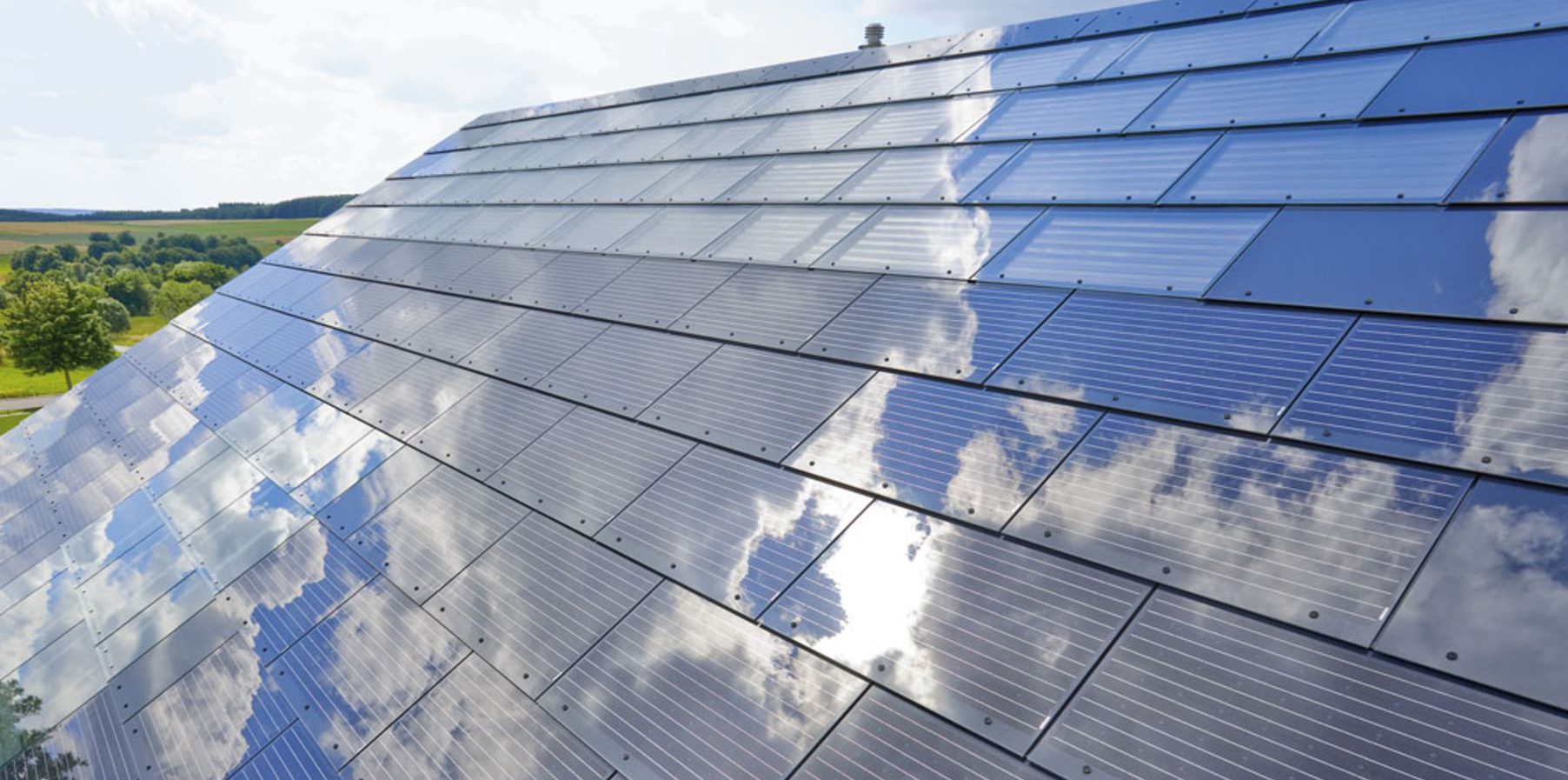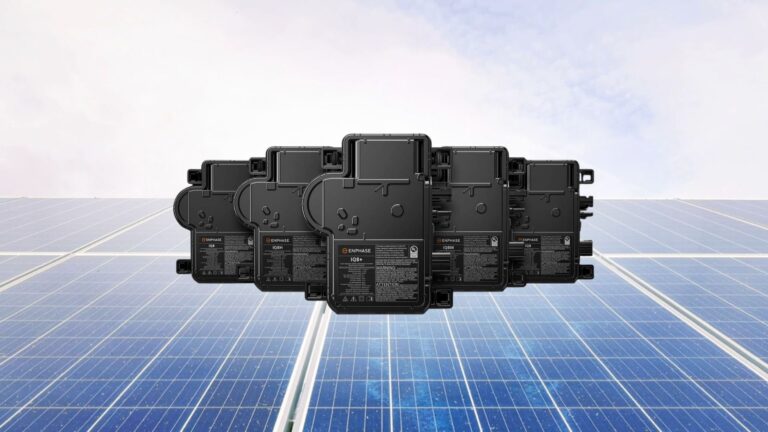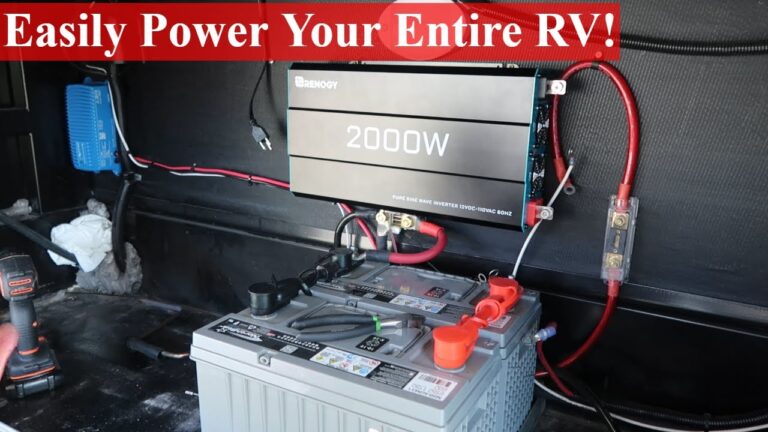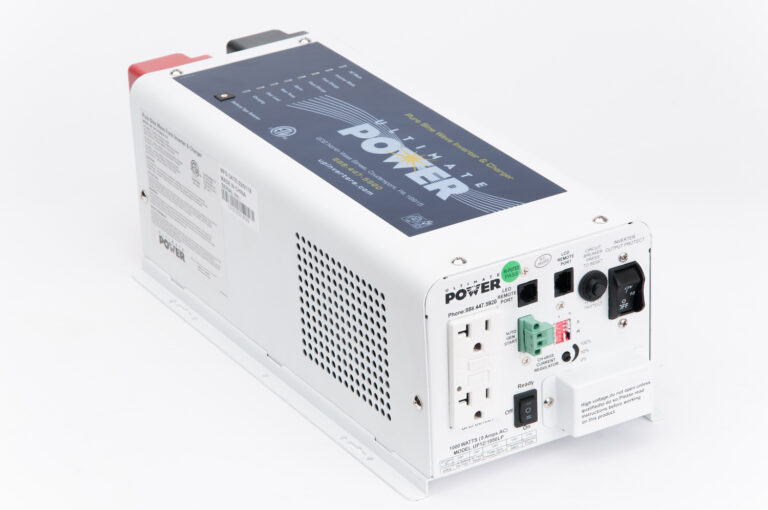What are Solar Shingles? How Do Solar Shingles Work?: Unveiling the Power of Solar Roofing
Solar shingles are photovoltaic panels that are designed to look like traditional roofing material. They work by capturing sunlight and converting it into electricity, which can be used to power a home or stored in a battery for later use.
These shingles are installed on the roof and are connected to an inverter that converts the direct current (DC) electricity into alternating current (AC) electricity, which is what most homes use. As the sun shines on the shingles, the solar cells inside them generate an electric current.
This electricity is then used to power appliances, lights, and other electrical devices in the home. With advancements in technology, solar shingles have become an innovative and seamless way to integrate solar power into residential rooftops.
The Science Behind Solar Shingles
Solar shingles, also known as photovoltaic shingles, are a revolutionary innovation in the solar power industry. These innovative roofing materials seamlessly integrate solar cells, allowing homeowners to harness the power of the sun while maintaining the aesthetics of their homes. To understand how solar shingles work, it’s important to delve into the science behind this ingenious technology.
Photovoltaic Technology In Solar Shingles
The key to solar shingles lies in their utilization of photovoltaic (PV) technology. PV technology is a way to convert sunlight directly into electricity using solar cells. Each solar shingle is embedded with an array of these solar cells, which are made up of semiconductors such as silicon. When sunlight hits these cells, it triggers a series of chemical reactions that generate a flow of direct current (DC) electricity.
How Solar Cells Convert Sunlight Into Electricity
The magic happens within the solar cells themselves. These cells are made up of multiple layers, each designed to perform a specific function. When sunlight hits the cells, it passes through a protective top layer, also known as an anti-reflective coating. This coating helps to maximize solar absorption and minimize light reflection.
Beneath the coating lies a layer of semiconductor material, usually silicon. Silicon atoms are arranged in a specific pattern, creating a lattice-like structure. As photons from sunlight strike the atoms, they transfer energy to the electrons, causing them to become excited and break away from their atoms. This process creates electron-hole pairs.
The next layer, the p-n junction, acts as a gatekeeper. It separates the positively charged holes from the negatively charged electrons. This separation creates an electric field, allowing electrons to flow only in one direction as they are pushed toward the n-type layer and the holes toward the p-type layer.
The final layer, the metal contacts, enables the captured electrons to be harnessed as usable electricity. These contacts are connected to an electrical circuit, allowing the generated direct current (DC) to either be used instantaneously or stored in a battery or grid-tied inverter for future consumption.
Key Components Of Solar Shingles
- Solar Photovoltaic Cells
- Anti-reflective Coating
- Semiconductor Material
- P-N Junction
- Metal Contacts
Each component is carefully engineered to optimize the efficiency and functionality of solar shingles, ensuring maximum power generation. The seamless integration of these components within the shingles allows for a sleek and streamlined appearance while harnessing the sun’s energy to provide electricity for various applications.
Exploring The Future Of Solar Shingles
Exploring the Future of Solar Shingles
Technological Advancements And Innovations In Solar Shingle Design
Solar shingles represent a promising advancement in renewable energy technology. These innovative roofing materials seamlessly combine the functionality of traditional shingles with the power-generating capabilities of solar panels. As technology continues to evolve, we can expect to see exciting developments in solar shingle design. One notable area of advancement is the integration of more efficient photovoltaic cells into the shingle’s construction.
This integration will allow solar shingles to capture more sunlight and generate greater amounts of electricity. Additionally, advancements in manufacturing techniques are enabling solar shingles to become thinner and lighter, further enhancing their appeal and performance. These technological improvements make solar shingles an attractive option for homeowners looking to harness clean energy without compromising on design or aesthetics.
Potential For Solar Shingles To Become More Affordable And Widespread
Cost has historically been a barrier to the widespread adoption of solar energy systems. However, with advancements in manufacturing processes and increased demand, the prices of solar shingles are expected to drop significantly in the near future. As economies of scale come into play and competition in the market increases, we can anticipate a reduction in the cost of materials and installation for solar shingles.
This affordability factor is expected to drive the popularity and accessibility of solar shingles, making them an attractive option for homeowners and businesses alike. The potential for lower electricity bills and the ability to contribute to a greener future will be compelling incentives for individuals to switch to solar shingles.
The Role Of Solar Shingles In Transitioning To A Clean Energy Future
The transition to clean and renewable energy sources is crucial in tackling climate change and reducing our dependence on fossil fuels. Solar shingles have a vital role to play in this transition by providing an efficient and sustainable energy solution for our homes and buildings. By harnessing the power of the sun, solar shingles enable us to generate electricity without depleting non-renewable resources or emitting harmful greenhouse gases.
Furthermore, solar shingles encourage energy self-sufficiency, as they can generate power even during grid outages. This resilience ensures that essential functions remain operational, reducing the impact of power disruptions. With their ability to seamlessly integrate with existing roof structures, solar shingles offer a practical and aesthetically pleasing solution for individuals and communities aiming to adopt clean energy practices.
As the future of solar shingles unfolds, it is clear that these innovative roofing materials have the potential to revolutionize the way we generate and consume energy. Technological advancements, increased affordability, and their role in facilitating a clean energy future all contribute to the growing popularity and adoption of solar shingles. So, it’s not surprising that more and more homeowners are looking towards solar shingles as a reliable and sustainable energy solution.
Integrating Solar Shingles With The Power Grid
Solar shingles are revolutionizing the way we harness and utilize solar energy. These innovative roofing materials not only provide protection to your home but also generate electricity from sunlight. By integrating solar shingles with the power grid, homeowners can take advantage of various benefits, such as net metering, battery storage systems, and seamless connection to the electrical grid.
Net Metering: Feeding Excess Energy Back Into The Grid
Net metering is a system that allows homeowners with solar shingles to feed any excess electricity they generate back into the power grid. By doing so, they can receive credits from their utility company for the surplus energy they contribute. This means that during times when the sun is shining and the solar shingles are producing more electricity than the household needs, homeowners can effectively offset their energy consumption and reduce their utility bills. It’s a win-win situation where homeowners can save money and promote sustainability.
Storing Solar Energy With Battery Systems
In addition to net metering, homeowners can also opt to integrate their solar shingles with battery storage systems. These batteries allow them to store the excess energy generated during the day for use during the night or during power outages. By storing solar energy, homeowners gain more control over their electricity usage and reduce their reliance on the electrical grid. Battery systems ensure efficient utilization of solar energy, even when the sun isn’t shining, providing uninterrupted power supply and increasing self-sufficiency.
Connecting Solar Shingles To The Electrical Grid
To fully exploit the benefits of solar shingles, it’s crucial to connect them seamlessly to the electrical grid. This connection ensures a continuous supply of electricity to the home, even when the solar shingles aren’t producing enough energy to meet the household’s needs. By integrating solar shingles with the electrical grid, homeowners can effortlessly switch between solar power and grid power, without any disruptions or loss of electricity. This seamless integration not only provides convenience but also maximizes energy efficiency and ensures a sustainable power supply.
Installing Solar Shingles: A Step-by-step Guide
Installing solar shingles on your roof can be an excellent way to harness the power of the sun and reduce your carbon footprint. These innovative shingles not only add aesthetic appeal to your home but also generate clean, renewable energy. In this step-by-step guide, we will walk you through the process of installing solar shingles, starting with assessing the suitability of your roof and ending with the final wiring and mounting.
Assessing The Suitability Of Your Roof For Solar Shingles
Before you begin, it’s crucial to determine whether your roof is suitable for solar shingles. Here are a few factors to consider:
- The direction your roof faces: Ideally, your roof should be south-facing to maximize sun exposure.
- The roof’s pitch: Solar shingles work best on roofs with a pitch between 15 and 40 degrees.
- The amount of shade: Ensure your roof receives ample sunlight throughout the day, without significant shading from trees or neighboring buildings.
If your roof meets these criteria, you can move on to the next step.
Preparing Your Roof For Installation
Once you’ve determined that your roof is suitable for solar shingles, it’s time to prepare it for installation. Follow these steps:
- Clean and inspect your roof: Remove any debris, such as leaves or branches, and check for any damage that needs repair.
- Reinforce the roof structure if necessary: Solar shingles are relatively lightweight, but it’s essential to ensure your roof can support the additional weight. Consult with a structural engineer if needed.
- Replace any damaged or worn-out roofing materials: It’s important to have a solid and sound roof foundation before installing solar shingles.
By taking these preliminary steps, you’ll ensure the longevity and effectiveness of your solar shingle system.
Installing Solar Shingles: Mounting And Wiring
Now comes the exciting part: installing the solar shingles themselves. Follow this step-by-step process:
- Mounting the solar shingles: Start by attaching the mounting brackets to your roof, following the manufacturer’s instructions. These brackets provide a secure base for the solar shingles.
- Wiring the solar shingles: Once the brackets are in place, it’s time to connect the solar shingles together and wire them to the inverter. Ensure each shingle is properly aligned and connected according to the manufacturer’s guidelines.
- Connecting to the electrical system: After all the shingles are wired, connect the solar panel system to your house’s electrical system. It’s recommended to hire a licensed electrician for this step to ensure safety and compliance.
Throughout the installation process, it’s crucial to follow all local building codes and regulations to ensure a safe and effective solar shingle system.
Cost Considerations: Investing In Solar Shingles
If you’re considering investing in solar energy for your home, it’s essential to understand the cost considerations associated with solar shingles. While solar shingles offer numerous benefits, including energy savings and environmental sustainability, the upfront costs may vary depending on various factors.
Upfront Costs Of Installing Solar Shingles
The upfront costs of installing solar shingles can vary depending on factors such as the size of your roof, the number of solar shingles required, and the complexity of the installation. Additionally, the quality and efficiency of the solar shingles themselves can impact the cost. On average, the initial investment for solar shingles ranges from $10,000 to $30,000, but it’s crucial to obtain a personalized quote from a professional installer to receive an accurate estimate for your specific requirements.
While the upfront costs may appear substantial, it’s essential to consider the long-term savings and return on investment that solar shingles offer.
Long-term Savings And Return On Investment
When you invest in solar shingles, you’re essentially upgrading your home to generate clean and renewable energy. By harnessing the power of the sun, solar shingles can significantly reduce your monthly electricity bills, resulting in long-term savings. The exact amount of savings will depend on factors such as your energy consumption, the efficiency of the solar shingles, and the amount of sunlight your roof receives.
Moreover, solar shingles offer a great return on investment over time. By reducing your dependence on traditional energy sources, you not only save money but also increase the value of your property. This is particularly beneficial if you decide to sell your home in the future, as solar installations are seen as valuable assets in today’s environmentally conscious market.
Government Incentives And Tax Credits For Solar Installations
One significant advantage of investing in solar shingles is the availability of government incentives and tax credits that can significantly offset the upfront costs. These incentives vary from region to region but often include federal tax credits, state rebates, and utility incentives. By taking advantage of these programs, you can significantly reduce your initial investment and accelerate your return on investment.
It’s important to research and understand the incentives and tax credits available in your area. Additionally, consulting with a professional solar installer can help you navigate the complex landscape of incentives and ensure that you maximize your savings.
In conclusion, investing in solar shingles offers numerous benefits, including long-term savings, increased property value, and environmental sustainability. While the upfront costs may vary, the long-term return on investment and the availability of government incentives make solar shingles an attractive option for homeowners who want to harness the power of the sun.
Common Concerns And Misconceptions About Solar Shingles
As solar energy becomes more popular, homeowners are increasingly considering solar shingles as a viable option for their roofs. However, there are several common concerns and misconceptions that often arise when it comes to these innovative solar panels disguised as traditional roofing materials. In this article, we will address these concerns and debunk any misconceptions, providing you with the information you need to make an informed decision about incorporating solar shingles into your home.
Durability And Lifespan Of Solar Shingles
One of the main concerns homeowners have when considering solar shingles is their durability and lifespan. After all, investing in solar energy is a long-term commitment, and you want to ensure your investment will last. Fortunately, solar shingles are designed to be highly durable and can withstand the elements.
Solar shingles are typically made from high-quality materials such as tempered glass or crystalline silicon, which not only provide excellent protection against wear and tear but also ensure longevity. These materials are specifically chosen for their strength and resistance to harsh weather conditions, such as heavy rain, hail, and even high winds.
Moreover, the lifespan of solar shingles is comparable to traditional asphalt shingles, with most manufacturers offering warranties ranging from 20 to 30 years. With proper installation and regular maintenance, solar shingles can continue producing clean energy for decades, making them a reliable choice for homeowners looking to harness the sun’s power.
Weather Resistance And Performance In Different Climates
Another concern homeowners often have is how solar shingles perform in different climates. It’s natural to wonder whether these innovative panels will be able to generate sufficient energy in regions with less sunshine or more extreme weather conditions.
Solar shingles are designed to perform well in a variety of climates, from sunny and hot areas to cloudy and cooler regions. While solar panels generate more electricity on sunny days, the technology behind solar shingles allows them to still produce energy even under less favorable weather conditions.
| Climate | Solar Shingle Performance |
|---|---|
| Sunny | High energy generation |
| Cloudy | Moderate energy generation |
| Cooler | Reduced but continuous energy generation |
| Rainy | Minimal energy generation |
As shown in the table, solar shingles still generate energy even during cloudy or cooler days, ensuring a steady supply of clean electricity for your home. So, regardless of your climate, you can benefit from the use of solar shingles and reduce your reliance on non-renewable energy sources.
Compatibility With Existing Roof Materials
A common misconception regarding solar shingles is that they may not be compatible with existing roof materials. Homeowners worry about the visual cohesion and whether solar shingles will work seamlessly with their current roofing.
However, manufacturers have taken this concern into account, and solar shingles are designed to blend with various roof materials. They are available in different colors and styles, allowing for a harmonious integration with your existing roof. Whether you have asphalt shingles, metal, or tile roofing, solar shingles can be installed to complement your current aesthetic while providing the added benefit of powering your home with renewable energy.
In conclusion, solar shingles address the common concerns and misconceptions by offering durability and a comparable lifespan to traditional shingles, performing well in different climates, and being compatible with various roof materials. By choosing solar shingles, you can enjoy the benefits of sustainable energy generation without compromising the aesthetics or longevity of your roof.
Maximizing Efficiency: Optimizing Solar Shingle Performance
One of the key advantages of solar shingles is their ability to harness the power of the sun and convert it into electricity. However, to ensure that your solar shingles operate at their maximum efficiency, there are several factors that need to be taken into consideration. In this section, we will explore the factors that affect the efficiency of solar shingles and provide tips for optimizing their performance.
Factors Affecting The Efficiency Of Solar Shingles
Several factors can impact the efficiency of solar shingles, including:
- The quality and type of solar shingle technology used.
- The size and layout of your solar shingle installation.
- The climate and weather conditions in your area.
- The cleanliness and maintenance of your solar shingles.
Positioning And Angling For Optimal Sun Exposure
The positioning and angling of your solar shingles can significantly affect their performance. To maximize their exposure to the sun’s rays, consider the following tips:
- Install the solar shingles on a south-facing roof whenever possible, as this will provide the greatest amount of sun exposure throughout the day.
- Ensure that there are no obstructions such as trees or buildings that cast shadows on the solar shingles.
- Angle the solar shingles at the optimal tilt angle for your location. This angle is typically equal to your latitude, but adjustable mounting systems may allow for fine-tuning.
Maintenance Tips For Ensuring Peak Performance
Maintaining your solar shingles is essential to ensure their peak performance. Here are some maintenance tips to follow:
- Regularly inspect your solar shingles for any damage or debris that may be obstructing sunlight.
- Clean your solar shingles using a soft brush or sponge and a mild detergent if necessary. Avoid using abrasive materials that could scratch the surface.
- Keep the surrounding area clear of vegetation or objects that may cast shadows on the solar shingles.
- Monitor your solar shingle system’s performance regularly and address any issues promptly.
By considering these factors and following these optimization tips, you can ensure that your solar shingles operate at their maximum efficiency, generating clean and renewable energy for years to come.
Solar Shingles: An Innovative Solution For Renewable Energy
Solar energy is becoming an increasingly popular choice for powering homes and businesses around the world. As the demand for clean and renewable energy sources grows, innovative solutions continue to emerge. One such solution that has gained attention in recent years is solar shingles. These remarkable roofing materials not only protect your home from the elements but also harness the power of the sun to generate electricity.
What Are Solar Shingles?
Solar shingles, also known as photovoltaic shingles, are roofing materials that are designed to generate electricity from sunlight. Unlike traditional solar panels that are mounted on top of an existing roof, solar shingles are integrated directly into the roof structure. This seamless integration allows them to blend in with the surrounding shingles, creating a more aesthetically pleasing appearance.
While solar shingles may look like regular roofing materials, they are made up of specialized photovoltaic cells. These cells are responsible for converting sunlight into usable electricity. They are typically made of silicon, a semiconductor material that efficiently absorbs photons from the sun. When sunlight hits the solar shingles, the photons knock electrons loose from the silicon atoms, creating an electric current.
How Do Solar Shingles Work?
Solar shingles work by harnessing the power of the sun and converting it into electricity that can be used to power your home. Each individual solar shingle contains multiple photovoltaic cells, which are interconnected to form a complete system. These cells are arranged in a way that maximizes the amount of sunlight they can absorb.
When sunlight shines on the solar shingles, the photovoltaic cells generate direct current (DC) electricity. This DC electricity then flows into an inverter, which converts it into alternating current (AC) electricity. AC electricity is the type of electricity that powers the appliances and devices in your home.
The AC electricity produced by the solar shingles can either be used immediately to power your home or stored in a battery for later use. Excess electricity that is not used or stored can be fed back into the grid, allowing you to earn credits on your electricity bill through a process known as net metering.
The Benefits Of Solar Shingles
There are several benefits to installing solar shingles on your roof. Here are some of the key advantages:
- Renewable energy: By using solar energy, you are reducing your reliance on fossil fuels and contributing to a cleaner and more sustainable future.
- Aesthetics: Solar shingles blend seamlessly with the rest of your roof, creating a more visually appealing appearance compared to traditional solar panels.
- Energy savings: By generating your own electricity, you can significantly reduce your monthly energy bills.
- Tax incentives: Many governments and local authorities offer tax incentives and rebates to encourage the use of solar energy.
- Long lifespan: Solar shingles are designed to be durable and can last for several decades, providing you with a reliable source of clean energy for years to come.
Overall, solar shingles offer an innovative and effective solution for homeowners who want to embrace renewable energy. With their ability to seamlessly blend into the roof while generating clean electricity, solar shingles are a promising option for a greener future.
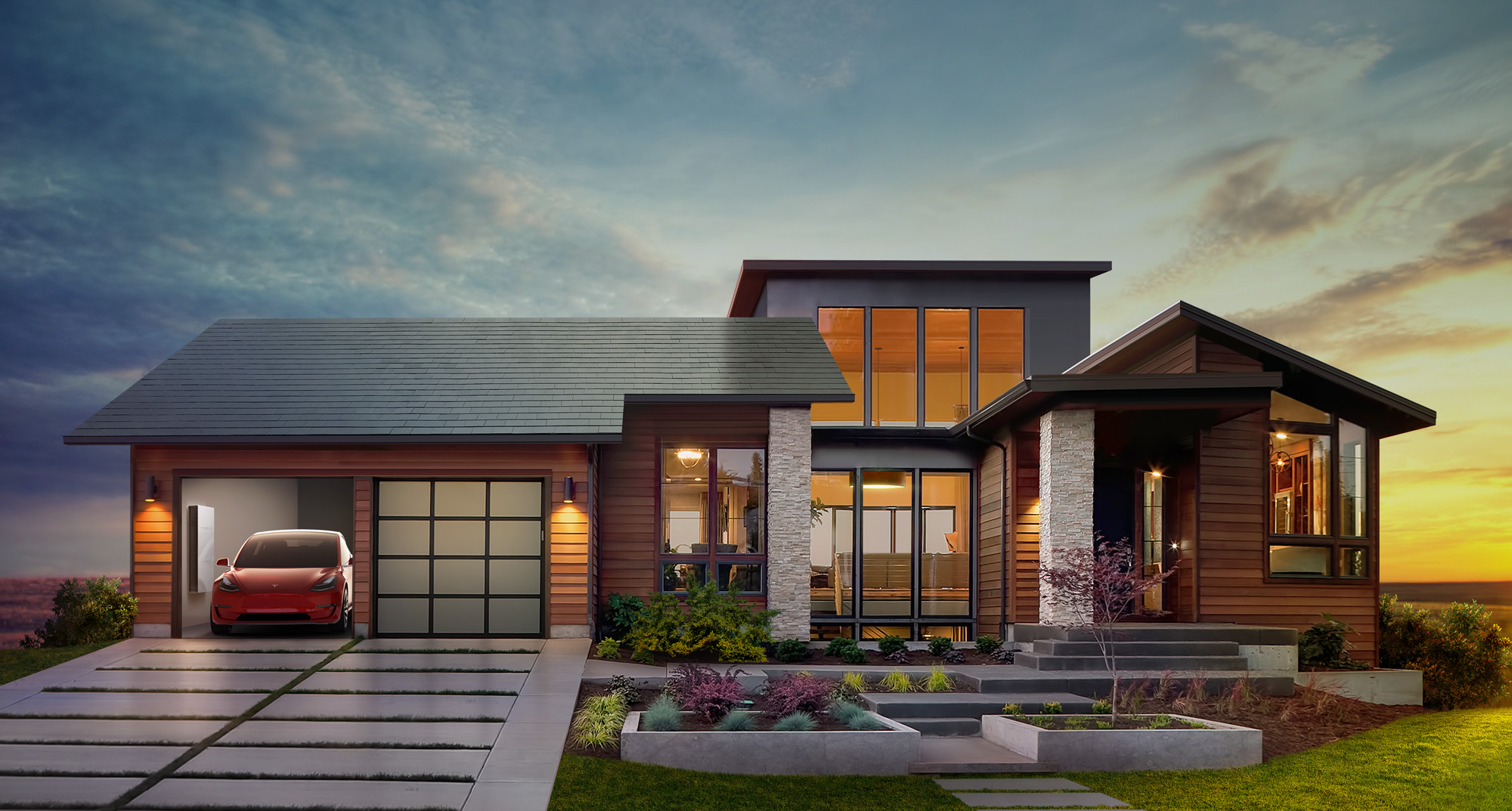
Credit: techcrunch.com
Frequently Asked Questions On What Are Solar Shingles? How Do Solar Shingles Work?
How Do Solar Shingles Work?
Solar shingles work by converting sunlight into electricity. They are installed on rooftops just like regular shingles, but they have built-in photovoltaic cells that capture the sun’s energy. These cells then convert the sunlight into usable electricity that can power your home or be sent back to the grid.
What Are The Drawbacks Of Solar Shingles?
Solar shingles have a few drawbacks. They can be expensive to install and may not generate enough power in cloudy areas. Also, they may not be as durable as traditional roofing materials and require regular maintenance. Additionally, they can only be installed on specific types of roofs, limiting their usability.
Are Solar Shingles As Good As Solar Panels?
Solar shingles and solar panels are both effective for generating solar energy. However, while solar panels are more commonly used and have a higher energy output, solar shingles are a good alternative for those who prefer a seamless and aesthetically pleasing option for their rooftops.
What Is The Cost Difference Between Solar Panels And Solar Shingles?
The cost difference between solar panels and solar shingles varies. However, generally, solar shingles tend to be more expensive than traditional solar panels due to their integration into the roof. Keep in mind that prices can depend on factors like the brand, size, and installation requirements.
Conclusion
Solar shingles offer a sleek and innovative way to harness the power of the sun. As a roofing material, they seamlessly blend functionality and sustainability. By converting sunlight into usable electricity, these shingles can significantly reduce energy costs and carbon footprints.
With their cutting-edge technology and design, solar shingles are revolutionizing the way we power our homes. Incorporating them can make a tremendous difference in promoting a greener and more sustainable future.

